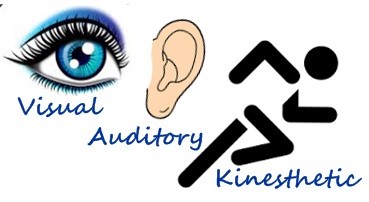My Opinions and Reflections
The
modern world as we call it, the 21st century is the world of
progress and technological advancement. Basically, we like to call it a digital
world. Computers and networking have invaded our world. Today, we have an
access to vast information and mass media in a day than a man’s entire life
would have gathered just 50 years ago. It has become our challenge as well as
an opportunity as an educator to use computing methods and techniques while
teaching. That enables the learners to use their knowledge more efficiently. In
this computerized era of 21st century, majority of the task is done with the
use of computer or technology and it has become a necessity. Virtual
environments and graphical interfaces are widely used today to educate, present
or even discuss important meetings.
The
module describes different types of information and communication technologies
(ICT) used in engaging students in better learning experiences. The five types
of ICT tools discussed are
- Informative
- Situating
- Constructive
- Communicative tools
- Co-constructive tools.
I
had been made aware that the meaning of information and communication
technologies is a collection of technological tools and resources which are
then used to communicate, design, develop and manage information. ICT in
teaching and learning is about enhancing teaching and learning process and
skills, motivating students and reinforcement of their knowledge, and helping
tutors and students to actively fulfill learning objectives. Nevertheless, I am
also aware that ICT can be disadvantageous too in some areas. The value of ICT
integrated teaching and learning as discussed are:
- Development of practical and presentation skills
- Helps both the teacher and the learner in knowledge comprehension.
- Provides opportunities for teacher and students to operate, store, manipulate, and retrieve information.
- Efficient communication and relationship
- Wise extraction of information.
- Helps in comprehension of knowledge.
Some
of the advantages are:
- Classrooms can be made interactive to improve students’ concentration and attendance.
- Breaks the monotonous teaching or teacher centric learning.
- Reinforce additional information about the subject matter
- Information and knowledge can be accessed beyond the classroom boundary.
With the
world suffering from the pandemics of CoVID-19, basically a respiratory and
pneumonia like flu as we know today, classroom teaching and learning has become
a major threat for the health of both students and teachers. Such shift in the
paradigm of education has made the importance of ICT integrated teaching and
learning more effective than before. However, care must be taken in order to
ensure the quality education in our students.
Digital
Native and Digital Immigrants
Even
though I feel that ICT integrated learning in the modern education system is
highly debatable, it can be noted that our system and model of education must
change in order to suit and tackle the growing technology as well as the
growing concerns and opportunities. I feel that ICT can be highly influential
tool in propagating knowledge and wisdom. If used in an effective manner, ICT
can be one of the highly supplicated tools that human race can ever create to
store and transfer the knowledge that is learned, understood and used.
The
class touched on the topic of digital native and digital immigrants. Digital
native is when students from kindergarten to colleges are grown up with the
technologies. People who have much familiarity in using computers, videogames,
and digital music players, cell phones and other digital tools age falls under
digital native. Digital immigrants are peoples who are born without much
knowledge of technologies but they learn technologies later in life. These
groups have different background on technology. However, technology is highly
adaptable and using ICT as a teaching leaning tool should be an important
decision, although care must be given in order to let Digital Immigrants to
cope up with the natives.
Different Learning Styles
 |
| Source: Google |
Visual Auditory Kinesthetic
(VAK) style helps us design learning methods and experiences that match
people’s preferences. As we are aware that not everyone’s learning style and
adaptation won’t be same, it can be either or combination of auditory, visual,
and kinesthetic in terms of way he or she learns the best. There is no style
that teaches all the best. This model provides three basic sensory receivers
i.e., vision, auditory, and kinesthetic to determine a people dominate or
preferred learning style.
No one has exclusively one
single style of preferences as learners use all three methods to receive
information. However, teacher must know the dormant sense of some students so
that he or she won’t be lagging behind in terms of gaining knowledge.
No comments:
Post a Comment